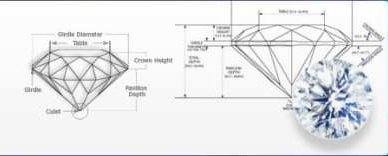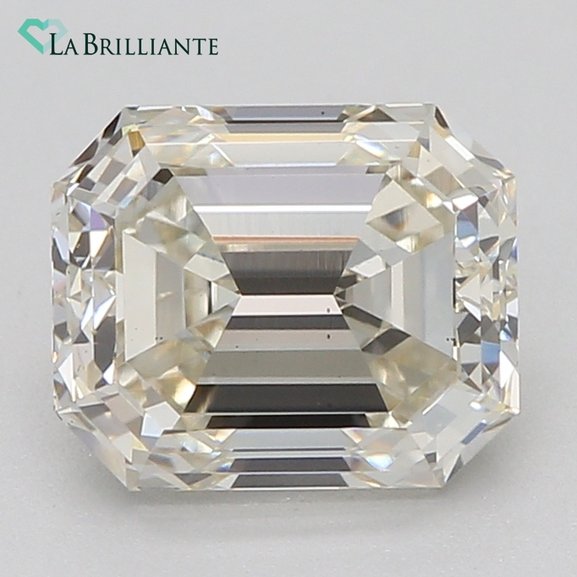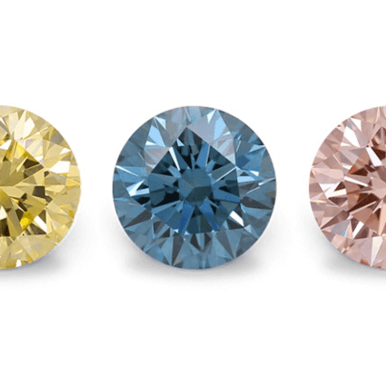Cheapest Lab-Grown Diamonds
There is a stereotype that diamonds are always expensive. It is possible to purchase a lab diamond at an affordable price. In this article, we tell you how to choose an inexpensive diamond that fits your needs and your budget.
How to Save Money on Buying Lab Diamonds by Choosing the Right Cut?
Diamond cut refers to the proportions, symmetry, and polish of the stone. It impacts brightness, fire, and scintillation. Cut quality signals value, significantly impacting price. Understanding cheaper cuts facilitates budget-conscious purchases.
Diamond cut is distinct from shape (form). Cut constitutes the angles and facet finishes which redirect light. Diamonds with aligned facets and symmetry exhibit optimal light return. Impaired cuts necessitate lower prices. Cushion and emerald cuts typically fall into lower cut categories, presenting affordable options.
Here is a comparison table of cheap diamond cuts versus the round lab diamond.
| Cut | Characteristics Compared to Round | Average Savings vs. Round |
|---|---|---|
| Cushion | Rounded corners, larger facets | 10-20% cheaper |
| Oval | Elongated round shape | 5-15% cheaper |
| Asscher | Step-cut, cropped corners | 15-25% cheaper |
| Emerald | Focus on clarity over fire | 10-20% cheaper |
| Radiant | Trimmed corners, brilliant facets | 5-15% cheaper |
These percentages are general estimates and can vary based on individual diamonds, market conditions, and other factors.
Lab-Grown Diamond Clarity: The Most Cheap
Diamond clarity rather than sheer size conveys luxury more affordably. Unlike popular belief, carat weight holds little influence over sparkle. Large yet dull stones pale in comparison to smaller, well-cut grades offering colorful flashes even with inclusions when viewed face-up.
Luckily, faint natural flaws in SI1 to SI2 lab-grown diamonds remain nearly invisible without props like loupes and are cheaper than higher-grade diamonds. Those fine with mere pinpoints can safely drop to I1 clarity for discounts from 30-50% off internally flawless options - without compromising beauty.
Setting also matters more than size for maximizing light performance. Keeping the diamond unobstructed in a halo setting prevents stealing attention from the rainbow sparkle. It also makes the main stone’s dimensions appear amplified for less upfront.
Which Lab-Grown Diamond Should I Choose to Save my Budget: Colorless or Colored?
Since a diamond's price depends on several factors besides its hue, the phrase "cheapest diamond color" can be quite misleading. However, when discussing white diamonds, the "K" color grade is typically the one most cheap option.
As you go down the color scale from G to J and lower, lab-created diamonds begin to exhibit more noticeable yellow or brown tones. This is especially true with yellow diamonds. The K color grade is usually where the yellow or brown color starts to become more visible to the naked eye and more pronounced overall. Despite not compromising any of a diamond's innate magnificence or charm, K grade diamonds with a color rating in the K range are typically less expensive than diamonds with superior color grades.
Colorless diamonds are usually cheaper than colored lab diamonds, but there are other elements to examine. Although colored diamonds are extremely rare, constituting less than 0.1% of unearthed diamonds, there is truly a nice selection of colored at affordable prices.
So when it comes to pricing - the fundamental principles of economics apply here too - supply and demand determines the prices of different colored lab-created diamonds.
In this case, a diamond's color rarity and how difficult it is to obtain basically decides the supply. Grey, brown and fancy yellow diamonds are affordable colored diamonds. These beauties actually make a great alternative to white diamonds, costing even less often (except for intense shades like vivid yellows).
Economical Carat Weights for Diamonds
For many lab-grown diamond shoppers, deciding on the carat size poses a major dilemma - go bigger for maximum glitter or stay smaller to fit the budget? Fortunately, there are certain carat weights where you can find deals on cheap high-quality lab-created diamonds and still get that eye-catching shine.
Diamonds just under the half-carat mark can offer great bang for your buck. A 0.47-0.49 carat stone gives nearly the same face-up size as a half-carat diamond but at a more affordable price point. Quarter-carat diamonds (0.25 carat) also can be cheap, with their petite size lowering prices.
Lab-grown diamonds with weights like 0.51 carat or 0.71 carat face stiff price competition from stones boasting the next half- or quarter-carat up. This lets you get extra carat weight for less money compared to the rounded weights like 0.50 carat or 0.75 carat.
The Most Affordable Metal for Lab Diamond Ring
White gold and palladium offer the brilliance of platinum for 80% less. Thanks to technological advances like rhodium plating, white gold and palladium metal now mimic the icy sheen of platinum. Using these metals will give you a more cheap jewelry piece than jewelry with yellow gold.
Compared to pure platinum, palladium especially mirrors the same lure finish and weighs over 40% less behind equivalent scratch resistance. This translates into major markdowns. Men's wedding bands in palladium clock in 70% under platinum, translating to over $1,000 in savings for minimal compromise.
Conclusion
Prioritizing oval, cushion, emerald and radiant cuts in versatile halo settings dials up sparkle for high-quality diamonds. Downgrading clarity slightly to IF or SI ranges also capitalizes on big.
Palladium and white gold inside collections mimicking platinum deliver comparable shine and durability for 80% less. The savviest buyers can curate head-turning style while staying comfortably under budget.
Keep in mind that the most affordable lab-grown diamonds are offered by diamond manufacturers and diamond wholesalers. At Labrilliante, you will be able to buy lab diamonds cheaply with various options. We do not inflate our prices due to our own production.




























